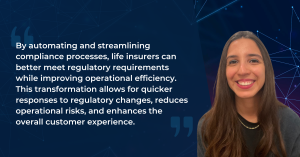Enhancing Counterparty Risk Monitoring and Oversight for Life Insurers
The life insurance industry is grappling with increasing regulatory demands and outdated manual processes, both of which make effective counterparty due diligence and oversight hard to uphold. To meet the regulatory requirements from the FCA and PRA, firms operating in the life insurance sector must ensure their operations and counterparty due diligence is constantly a key compliance priority. Managing these challenges with traditional outdated, often manual approaches, is no longer sufficient, and the growing need for sophisticated compliance systems is proving essential to meet the demands of regulatory obligations and enhance compliance...











